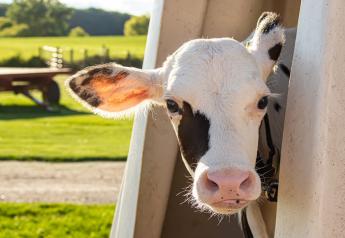New Tool Evaluates Options for Reducing Odors in Livestock Operations

Source: Iowa State University
A team of Iowa State University Extension and Outreach specialists have developed an online tool to help livestock and poultry producers compare odor mitigation techniques that could be useful on their farms.
Air Management Practices Assessment Tool, AMPAT for short, is web-based and available at no charge at www.agronext.iastate.edu/ampat.
“The website was developed to help livestock and poultry producers identify practices to reduce odors, and emissions of gases and dust on their farms caused by animal production. The database lists options to be used from three core sources of odor and emissions in their operations — animal housing, manure storage and handling and land application,” said Angie Rieck-Hinz, an ISU Extension field agronomist and member of the project team.
Other members of the team include Jay Harmon, Steven Hoff and Dan Andersen, professors of agricultural and biosystems engineering at Iowa State.
Producers can select a specific mitigation practice and learn more about its effectiveness and relative cost. Rieck-Hinz said producers can use AMPAT in conjunction with the National Air Quality Site Assessment Tool (http://naqsat.tamu.edu/) to identify opportunities to make changes, find best practices for improving air quality and evaluate their effectiveness.
To evaluate practices on AMPAT, the producer can select from one of the three core odor source areas. Each category provides access to resources that are specific to a particular pollutant. Once a pollutant is selected, a variety of resources are listed. This list includes a research-based publication on the recommended practice, pros and cons of using the recommended practice and a short video. Additional information and related links also are provided.
“Our goal was to develop a tool that is easy to use and provides relevant and useful information for livestock producers across the state,” Harmon said. “AMPAT helps producers see which technologies have the highest impact. The scorecard is color-coded for quick reference.”
The AMPAT website shows a colored-coded listing of technologies to address pollutants. A green color indicates the selected technology has a high impact on that particular pollutant; yellow and red indicate medium and low impact, respectively. No color indicates there is insufficient data available to classify the effectiveness.
“For example, if a producer was concerned about a potential odor problem from animal housing, he would scan down the list under the ‘odor’ column at the top. From the list, he would find that ‘Siting,’ ‘Scrubbers,’ ‘Urine/Feces Segregation’ and ‘Biofilters’ have green bars, meaning they have high impact on odors. With that information, the producer could then investigate options for implementing those technologies and evaluate their selection based on relative cost or investigate all four options for their farm.”
“It’s not uncommon for a producer to identify best practices and implement them in their operation,” he said. “They want to be good neighbors and this tool helps them to achieve that goal.”
Development of the tool was completed by an Iowa State University Extension and Outreach project team with major funding from the National Pork Board.







